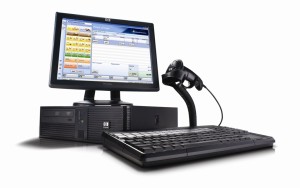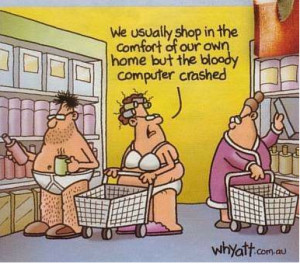Category: Internet Payment Gateway
February 13th, 2014 by Elma Jane
Becoming an e-commerce entrepreneur is an increasingly attainable dream for many aspiring business owners, as new online sales platforms and Web design tools continue to emerge. While just about anyone can launch an online business, it takes a dedicated salesperson to actually succeed, and that means staying on top of current marketplace trends.
If you’re ready to take your e-commerce business to the next level in 2014, watch these five current trends in online sales:
Access through smartphones, tablets and other mobile devices. Major gains seen in e-commerce usage of mobile devices such as smartphones and tablets, especially during the holiday season. Trend to accelerate as mobile adoption continues to increase and more mobile technologies become available. Small businesses should have a mobile version of their website, with mobile-optimized checkout to help facilitate a better mobile experience. Small retailers should also look at their site across multiple mobile devices and pay attention to new technologies, such as smartwatches.
Goodbye, traditional SEO. Google is constantly updating its algorithm in an effort to serve the best, most relevant content to its users. This means that traditional (SEO) search engine optimization tactics are falling by the wayside, and an increased push toward quality, unique content — along with social media signals — will be of huge importance in 2014. To help stay ahead of the SEO curve, small retailers should focus less on Traditional SEO Tenets like keyword usage and density, and instead aim efforts toward creating content that is tailored and useful for their target audience. Example, create more lifestyle-oriented content in the form of blog posts, videos and other types of media that encourage sharing by readers.
Increased dependence on data. Smaller online businesses continue to expand their presence across channels, the need to turn to performance data from both a channel-specific and holistic standpoint becomes even more important. Google Analytics is a good tool for this, because business owners can measure their site traffic from multiple devices and referral sites.
Small shops squeezed by larger merchants. Mega-retailers like Amazon continue to steal market share from other big-box retailers (both online and offline), smaller online businesses will need to become more nimble in how they compete, from a price, customer-service and marketing standpoint. This involves identifying true points of difference from larger merchants, showcasing these points in marketing and branding, and delivering personalized experiences.
The importance of multichannel selling. Customer shopping behaviors become more fragmented, so must the presence of small online businesses owners. Simply having an e-commerce site is no longer enough. Small and medium-size businesses (SMBs) should begin looking for efficient ways to expand their presence, including integrations with various shopping feeds and other outlets that can reach more consumers.
Posted in Best Practices for Merchants, Credit card Processing, e-commerce & m-commerce, Electronic Payments, Internet Payment Gateway, Mobile Payments, Mobile Point of Sale, Point of Sale, Small Business Improvement, Smartphone Tagged with: content, e-commerce, integrations, mobile adoption, Mobile Devices, mobile version, mobile-optimized checkout, multiple devices, online business, online sales, search engine optimization, shopping feeds, Small and medium-size businesses (SMBs), small online business owners, small retailers, Smartphones, smartwatches, social media signals, tablets
February 10th, 2014 by Elma Jane
Is traditional POS on its way out? Not so fast. It is likely to be an enhancement rather than a replacement to traditional POS.
Trending topic when it comes to POS is all about the mobile kind because Mobile Point of Sale (POS) systems have rocked the retail world. When one searches the term POS, nearly every article that comes up is all about mobile. Many seem to believe it will change the retail industry.
There is definitely a need and a place for both.
Retailers everywhere have incorporated the Internet into their business model by creating multi-channel sales strategies, such as e-commerce, digital marketing, social media marketing, online product information, specifications, reviews and online customer service.
In addition to their online presence, these same retailers have started to bring the Internet in-house by integrating such services as customer centric promotions at point of sale, introducing loyalty programs and member registration, facilitating digital signage, offering e-receipts via email, and self check out centers; all at the traditional POS kiosk. In fact, 95% of all sales transactions are conducted via traditional POS terminals.
Why bother with mobile POS anyway?
While it’s true that traditional POS system won’t be going anywhere soon and with good reason, mobile POS systems have allowed retailers to make great strides when it comes to efficiency and customer service, as well as customer satisfaction.
Companies have made big changes in the way they handle customer transactions in-store, thus affording faster checkout, waiting line reduction, consultative selling and more.
List of mobile POS benefits goes on:
Email Receipts – Better for the environment, more convenient for customers and faster to process, a digital purchase receipts sent via email tells the customer that you care about the earth and about them.
Expanded Reach – With mobile POS, your sales are no longer confined within the four walls of your brick and mortar store. Sidewalk sales, seasonal mall kiosks, and special sponsorship events are just a few examples of all the places you can take your retail sales to, with a POS in hand.
Inventory and Price Search – When customers can be assisted with finding an item color, size or availability on the spot, rather than having to wait in line to do so, it makes them happier. The same can be said for pricing. POS in the hands of store reps can go a long way toward customer satisfaction.
Inventory Return Stations – There is always a certain volume of returns, but that volume increases for retailers particularly after the holidays. The implementation of mobile POS allows for retailers to set up additional return stations in order to avoid long lines and customer frustrations.
Mobile POS goes Mobile – Your investment in your company POS system doesn’t need to be one size fits all, regardless of store traffic volume in one location or another. Retailers may opt to have a blow out sale in one location, thus require additional checkout power for that location for a specific period of time. With mobile POS, devises and licensing can be utilized throughout different store locations on an as needed basis.
Optional Seasonal Subscription – The great thing about mobile POS is that you needn’t pay for a POS system year round if you’re not using it year around. Seasonal spikes in retail sales warrant the additional cost of extra POS licensing and hardware, but the rest of the year your budget shouldn’t need to encompass more than what is needed. Mobile lets you better manage your overall POS investment.
Storewide Promotion Opportunities – Mobile POS has allowed retailers to drive sales in various sections of the store by holding demonstrations or promotions in different departments to tout products or services. Customers can be marketed and sold to, on the spot.
The growing industry of mobile payments doesn’t stop at in-store mobile POS. Digital wallets like Google Wallet and Apple Passbook, mobile-to-mobile cell phone transfers, Near Field Communication (NFC) payments, mobile device credit card swipe and other emerging technologies are quickly changing our cash and credit card world.
What about traditional POS?
Mobile payment systems are indeed terrific. So, when should you consider going with traditional POS? The reality is, in addition to the aforementioned benefits of traditional checkout kiosk functions, there times when mobile POS simply will not suffice.
Mobile POS is great when a customer wants to choose and pay for one item while on the sales room floor, but what about when the customer has a multitude of items? Ringing up and bagging groceries, removing anti-theft mechanisms, neatly folding and bagging clothing items and managing the sales of numerous agents, stations or departments are just a few examples of situations that often require the traditional POS checkout station.
By combining traditional POS strategies with mobile POS flexibility, retailers can leverage the command of a complex, and multi-dimensional, marketing and retail sales management system.
Posted in Credit card Processing, e-commerce & m-commerce, Electronic Payments, Internet Payment Gateway, Mobile Payments, Mobile Point of Sale, Near Field Communication, Point of Sale, Smartphone Tagged with: apple passbook, checkout station, credit card swipe, customer satisfaction, e-commerce, e-receipts via email, faster process, Google Wallet, Loyalty Programs, mobile payment system, mobile point of sale, mobile pos, mobile-to-mobile cell phone transfers, MPOS, multi-channel sales strategies, Near Field Communication, nfc, online customer service, online presence, POS, retail industry, retail sales, retail sales management system, traditional POS kiosk
February 10th, 2014 by Elma Jane
Impact on 2013 Holiday Sales’s Big Data
Holiday season has ended and the analysis has begun to understand what worked and what did not for ecommerce merchants. Cyber Monday became the biggest online shopping day in history with a 20.6 percent increase in sales over 2012, according to the IBM 2013 Holiday Benchmark Report. Retailers are increasingly tapping into the avalanche of data from their own sites and from third-party sites to drive sales and better serve their customers. This article will address five key ways Big Data impacted the 2013 holiday shopping season.
Contextual Promotions
The use of Big Data has enabled contextual promotions – mostly real-time push notifications based on consumers’ social media activity, tracking their locations, or capturing their interactions on the web and mobile devices. This holiday season contextual promotions were heavily used. IBM’s Cyber Monday Report states, “On average, retailers sent 77 percent more push notifications during the five day holiday shopping period when compared to daily averages over the past two months.” Retailers invested in social media sites like Facebook, Pinterest, and Instagram (among others) during the November and December holiday season. This led to higher referral sales from these sources.
Several physical retailers, including Best Buy and Kohl’s, also deployed location-based promotions to push notifications while the consumer is in or near the store. Some retailers tracked consumers’ locations without their knowledge, raising privacy concerns. Other retailers required an opt in by consumers to receive these promotions.
Additionally, some retailers used mobile apps to send contextual promotions based on tracking shoppers’ activities on the app and their physical locations with using it. Macy’s and J.C. Penney, for example, partnered with Shopkick (a shopping app provider) during this holiday season to reward brick-and-mortar shoppers with discounts or song downloads for trying on clothes, scanning barcodes, or making purchases.
Gift Selection
Holidays are all about gift giving. Some retailers used their Big Data recommendation algorithms to make it simpler to select gifts. These retailers built predictive models that process data from multiple sources like social media, wish lists, gift registries, and past purchases to predict the right gift for an individual.
Improved Customer Service
The holiday season results in more traffic for ecommerce merchants, which naturally leads to an increase in the volume of customer service issues. To keep customers happy during this time and manage customer service costs, some retailers implemented Big Data solutions to monitor customer activity and proactively respond to negative social media posts or issues. After all, one negative tweet can significantly impact business during this time of the year.
Real-time data feeds inform retailers in advance if customers will experience issues like a slow site, out of stock products, or delayed delivery. Retailers can either proactively correct the issue or notify the customers afterwards. Fab.com, for example, automatically credits a customer the difference if a price of an item drops immediately after purchase. T-Mobile USA has integrated Big Data across multiple IT systems to combine customer transaction and interactions data to better predict customer defections. By monitoring social media interactions with transaction data and billing systems, T-Mobile USA has reportedly reduced customer defections in half in a single quarter. Dell uses Big Data solutions to analyze real-time feeds from weather reports, delivery trucks, and orders to proactively resolve delivery problems before customers are aware of them.
Integrated Analytics
Most large retailers serve customers across multiple channels and devices. This makes it critical for those retailers to have a single view of all customer and product activity using data from all sources. Some retailers are already using such solutions and several more deployed such solutions before the holiday season. This one capability is crucial to track other Big Data uses, such as contextual promotions, gift selection, personalized customer experience, and improved customer service.
Personalized Customer Experience
Retailers have used Big Data to personalize their site content for several years. This was a competitive differentiator during this holiday season, however, as indicated by pre-holiday survey by Baynote, a personalized customer experience solution provider. The survey noted that eighty-one percent of retailers planned to upgrade ecommerce platforms to focus on customer experience, and to increase engagement, revenue, and ultimately lifetime value from improved relationships with shoppers. Retailers can categorize each shopper into a segment of one with its own customized landing pages, product catalog, campaigns, and even content. The result is an enhanced customer experience and an improved conversion rate.
Amazon.com continued to maintain its dominance in this space by using its extremely rich data set to personalize the shopping experience for its millions of shoppers. Another benefit from personalizing the customer experience is increased impulse buys, which become more important during the holidays as shoppers are in the right frame of mind to spend money.
Posted in e-commerce & m-commerce, Electronic Payments, Internet Payment Gateway, Merchant Account Services News Articles, Small Business Improvement Tagged with: analysis, analyze real-time feeds, barcode, benchmark, big data, brick and mortar, credits a customer the difference, customer service issues, customer transaction and interactions data, ecommerce merchants, large retailers, location based promotions, making purchases, online shopping, physical retailers, real-time data feeds, retailers, rich data set, shopping season, social media activity, transaction data and billing systems
February 3rd, 2014 by Elma Jane
National Transaction and Virtuoso Agreement Official
National transaction and Virtuoso signed a preferred supplier agreement this 30th of January. NTC’s Electronic Payment System will be offered to its more than 330 agencies with 7,200 elite advisors in 20 countries.
Virtuoso is the travel industry’s leading luxury network. Travelers who use Virtuoso’s Advisors get access to more than 1,300 of the world’s premier travel providers, as well as exclusive, experiences and products. Virtuoso’s history dates to the 1950s, when the tour company Allied Travel formed to help travel agencies with foreign, international and group trips. In 1986, Allied Travel merged with Percival Tours to form (API) Allied Percival International, joining the best travel agents in the country. In 2000, API was rebranded Virtuoso, and has since become the leading travel network in the world.
While National Transaction with over 15 years in the payment service industry, has gained experience to integrate vast range of payment services. Processing digital transactions for more than 3,000 business owners and has been the preferred merchant account provider for many industry associations including ASTA, CLIA, HBTA, ARTA OSSN and now VIRTUOSO.
Posted in Best Practices for Merchants, Credit card Processing, e-commerce & m-commerce, Electronic Payments, Internet Payment Gateway, Travel Agency Agents, Visa MasterCard American Express Tagged with: arta, ASTA, clia, hbta, merchant account provider, National Transaction Corporation, ossn, travel, travel agencies, travel industry's, travel network, travel providers, travelers, Virtuoso
January 29th, 2014 by Elma Jane
More than 60 percent of online shoppers returned or exchanged at least one item. About 95 percent of customers will go back to an online merchant and make additional purchases after a positive return or exchange experience, making managing the process important for e-commerce success.
Exchanges and returns will shortly be a hot topic for online retailers as Christmas gift recipients contact sellers in the wake of an exceptional holiday selling season. These Christmas gift recipients will want to exchange and return unwanted gifts, items that are wrong size, or even items that may have been damaged in transit.
Returns and exchanges are important for building long term customer relationships, with some 95 percent of shoppers going back to online merchants that have offered a good exchange or return experience in the past, according to data from Endicia, an electronic postage solution provider. Conversely, about 85 percent of consumers will not return to an online shop after a poor return or exchange experience, again according to Endicia.
What follows are tips for offering a better exchange or return experience for online shoppers.
Create an Opportunity
Returns and exchanges are also an opportunity to make additional sales. As mentioned above, about 95 percent of shoppers will return to an online store and make an additional purchase after a positive return or exchange experience.
Similarly, about 45 percent of shoppers will actually recommend an ecommerce merchant, again according to Endicia, after a positive return experience, meaning that taking care of an existing customers could lead to new customers too.
Consider sending each shopper who returns or exchanges an item a follow-up email, asking for feedback about the experience. Identify ways to improve the return process, and business in general will improve too.
Know the Cost of Returning
A guitarist for a popular party and event band recently ordered a new guitar strap from a merchant on the Amazon marketplace. Unfortunately, there was an error in the shipment, and the merchant apparently sent a shorter strap than expected. When this guitarist contacted the seller about an exchange, he was told that a new strap would be shipped that day and that he could simply keep the smaller strap.
This solution was great for the customer, who did not have to repackage the strap or arrange for a carrier to pick it up. He was generally happy with the experience. This was probably also better for the merchant, who might have simply been able to order a new guitar strap from its distributor for about the same cost has having the strap returned.
To make this sort of business decision, it is important to understand the real cost of managing a customer return, including the cost of the shipping and the labor necessary for processing the return once it arrives back at the seller’s warehouse. If it cost as much or nearly as much to return the item as it would to simply purchase another one wholesale, consider letting the customer just keep it, saving everyone involved time and expense.
Provide Return Instructions or a Return Label in Every Order
Shoppers don’t want to wait for return labels. In fact, about 62 percent of online shoppers want a return label included in the initial shipment, according to Endicia. Including a return label is not difficult, and many online sellers may find that the ability to do so is either built directly into the retailer’s ecommerce platform or is available via an extension to the ecommerce platform.
A second option may be to offer shoppers a simple, self-service way to print a return label from your site. This self-service option does not require the customer to contact the shipper to get authorization or wait for an emailed label. According to the Endicia data, about 61 percent of shoppers will be happy with an easy way to print return or exchange labels.
State Return and Exchange Policies Clearly
Let customers know exactly what to expect from the return and exchange process. Post clear, simple-to-understand policies on a page of the site specifically designated for returns or shipping policies.
Posted in Best Practices for Merchants, Credit card Processing, e-commerce & m-commerce, Electronic Payments, Gift & Loyalty Card Processing, Internet Payment Gateway, Visa MasterCard American Express Tagged with: Amazon, ecommerce, gift recipients, marketplace, online merchant, online retailers, online sellers, online shoppers, return or exchange, returns and exchanges, self-service
January 29th, 2014 by Elma Jane
Ecommerce and mobile-based e-commerce have grown significantly this year. Cyber Monday ecommerce sales, as an example, reached $1.735 billion originating from desktop and laptop devices, according to comScore. Even Black Friday, which is better known for brick-and-mortar retail sales, saw online spending reach $1.198 billion in the United States, again according to comScore. Mobile online spending may also have grown, as some reports indicate that mobile-based site traffic was up 55 percent around Thanksgiving.
Many ecommerce merchants are enjoying a robust holiday selling season even as some brick-and-mortar stores are seeing relatively flat Christmas sales. To ensure continued growth and success, Internet retailers may want to challenge their businesses to improve in several areas in 2014.
Retailers, however, should not rest on their current success, but rather should challenge their businesses to improve in several areas, including free shipping offers, mobile optimization, personalization, data driven decision making, and cross channel sales.
Offer Free, Two-Day Shipping
The first challenge for online sellers in 2014 may be to find ways to offer free, two-day shipping to all or most shoppers. While it is likely there will still be minimum purchase and maximum weight requirements and restrictions, online shoppers are going to expect faster free shipping options thanks, in part, to the growth in services like Amazon Prime and ShopRunner.
Consider order fulfillment services, distributed warehouses, drop shipping, or even partnerships with other retailers to help meet this challenge.
Offer Personalization and Customization
Personalization and customization could be a significant competitive advantage in 2014.
Challenge your business to finally begin offering personalization and customization both onsite and in marketing. The easiest place to start may be with email marketing. Work to segment email marketing campaigns so that they address customers by name and with relevant products and offers that are based on an individual’s or group of shoppers’ stated preferences or on-site behavior.
Taking on this challenge means that the retailer’s marketing department will need to collect meaningful information about what interests shoppers and organize separate, custom campaigns around those interests.
Put Mobile Design and Marketing First
In November, IBM reported that mobile devices accounted for 31 percent of U.S. ecommerce-related web traffic around the Thanksgiving holiday this year, and that 17 percent of ecommerce transactions came from smartphones or tablets. On average, tablet users spent more than $126.00 per order, and smartphone users spent about $106 per order.
This data shows that mobile e commerce is not simply a novelty, but rather a must have for 2014.
If an e-commerce business is not optimized for mobile sales, 2014 is the year to take on that challenge, including offering a responsive design and mobile friendly payment options.
Sell Seamlessly Across Channels, Devices
Try to think of every way that a shopper might interact with an online store, and then make all of those touch points work together in 2014.
Retailers online or in physical stores need to offer shoppers a seamless, cross channel shopping experience that makes buying things easier for the customer. To continue to enjoy success in 2014, consider offering shoppers the ability to share orders across devices, applications, and even marketplaces.
In practice, this might mean that items added to a cart in an online store show up in the cart for the retailer’s iPhone app too. Or that a customer’s order history displayed on a retailer’s site shows orders placed on-site and via a marketplace like Amazon or eBay.
Use Big Data for Big Information
In 2014, find sources of good, usable Big Data, and put the resulting big information to use.
As an example consider, Weather Trends International, a Big Data company that uses historical weather information and advanced data processing to accurately predict weather 11 months in advance. This sort of Big Data information could show a snowboard and ski retailer what sort of winter major ski resorts are likely to have next year, and could inform purchasing and inventory choices.
Similarly, knowing that a particular region is going to have a warmer than normal July and August might impact how, where, and when a clothing retailer promotes shorts or bikinis on Facebook or AdWords.
Big Data is a popular trend in business and in marketing. The concept can mean different things to different businesses. For ecommerce, retailers should seek to use Big Data to gather big information, if you will, that may be used to make better buying and selling decisions.
Posted in Credit card Processing, e-commerce & m-commerce, Electronic Payments, Internet Payment Gateway, Mobile Payments, Mobile Point of Sale, Smartphone, Visa MasterCard American Express Tagged with: adwords, Amazon, big data, big information, brick and mortar, cross channel, cyber, drop shipping, e-commerce, ecommerce, Facebook, internet retailers, laptop devices, Mobile Devices, mobile friendly payment options, mobile optimization, mobile-based site, on-site, online, online shoppers, online store, onsite, personalization, retailers marketing, retailers online, shopping experience, smartphone, Smartphones, tablet, tablets
January 21st, 2014 by Elma Jane
A “cryptocurrency” is a peer-to-peer, decentralized, digital currency. Cryptocurrencies offer the potential for merchants to one day break the stranglehold of credit card processing fees. Cryptocurrencies are a disruptive technology that should be actively followed and considered. After all, online commerce is itself a disruptive technology.
Bitcoin
Bitcoin’s high cryptographic security allows it to process transactions in a very efficient and inexpensive way. You can make and receive payments using the Bitcoin network with little or no fees, and without a merchant account. Payments are made from a wallet application, either on your computer or smartphone, by entering the recipient’s address, the payment amount, and pressing send. To make it easier to enter a recipient’s address, many wallets can obtain the address by scanning a QR code or touching two phones together with NFC technology. Market Cap: $10.6 billion (12.1 million coins).
Bitcoin is the first implementation of a cryptocurrency, which was first described in 1998 by Wei Dai and specified by Satoshi Nakamoto in 2009, establishing a decentralized form of money that uses cryptography to control its creation and transactions. New Bitcoins are generated by a competitive and decentralized process called “mining,” the process of spending computing power to process transactions, secure the network, and keep everyone in the system synchronized together. The number of new Bitcoins created each year is automatically halved over time until Bitcoin issuance halts completely with a total of 21 million Bitcoins in existence.
Feathercoin – is based on Litecoin’s Scrypt-based hashing algorithm for GPU mining, rather than requiring Bitcoin’s expensive ASIC mining hardware. Feathercoin uses advanced checkpointing to provide additional security through a form of centralization without having to redistribute the Feathercoin software. At mining completion, 336 million coins will be produced. Market Cap: $11 million (26.2 million coins).
Litecoin – is based on the Bitcoin protocol, but differs from Bitcoin in that it can be efficiently mined with consumer-grade hardware. Litecoin provides faster transaction confirmations and uses a mining proof-of-work algorithm to target the regular computers with GPUs — graphics processing unite — most people already have. Litecoin provides a mining algorithm that can run at the same time on the same hardware used to mine Bitcoins. The Litecoin network is scheduled to produce 84 million currency units. Market Cap: $731 million (23.9 million coins).
Megacoin – raises the most red flags among this list of cryptocurrencies. Launched just six months ago, fifty percent of the total coins have been mined. Upon mining completion, only 42 million coins will exist. Its branding might lead an investor to believe it is associated with billionaire Kim Dotcom’s Mega.co.nz, but there is no connection. If you are interested in monitoring the fate of the more speculative cryptocurrencies, this is one to watch. Market Cap: $15.3 million (21.2 million coins).
Namecoin – is based on the Bitcoin source code. A cryptocurrency, Namecoin also acts as a DNS, a decentralize domain name system to buy, register, configure, and sell domains. The first project using Namecoin is the .bit domain. Market Cap: $44.4 million (7.4 million coins).
Peercoin – is a cryptocurrency project forked from Bitcoin that strives to achieve energy efficiency and increased security. Like other cryptocurrencies, initial coins are mined through the more commonly used proof-of-work hashing process. However, unlike other coins, as the hashing difficulty increases over time, users continue to be rewarded with coins generated by the additional proof-of-stake algorithm. Unlike most cryptocurrencies, Peercoin does not have a fixed money supply. Market Cap: $90.1 million (20.9 million coins).
Primecoin – is the first cryptocurrency with non-hashcash proof-of-work. Primecoin’s proof-of-work is based on searching for prime number chains, providing potential scientific value in addition to minting and security for the network. Similar to Bitcoin, Primecoin enables instant payments to anyone, anywhere in the world. It also uses peer-to-peer technology to operate with no central authority. Primecoin is also the name of the open source software that enables the use of this currency. Market Cap: $13.8 million (3.5 million coins).
ProtoShares – are used to mine Distribute Autonomous Corporation (DAC) backed cyrptocurrencies while they are still in development by Invictus Innovations. DACs are essentially automated businesses that perform services. And so ProtoShares are stakes in future cryptocurrency platforms. Cryptocurrencies under development are BitShares for asset trading and DomainShares for domain services. Protoshares will achieve a maximum supply of approximately 2 million coins in 2 years. BitShares money supply will be about 20 million coins. Market Cap: $23.1 million (1.1 million coins).
Quark – is a cryptocurrency that focuses on enhanced security, using nine separate rounds of encryption and six different algorithms. Quark is mined by CPU only, with 247 million mined in the first six month and then an additional 1 million units mined every year. Quark coin will continue to release coins in perpetuity at an inflation rate of .5% per year. Market Cap: $47.4 million (246.3 million coins).
Worldcoin – seeks to become the cryptocurrency of choice for merchants and consumers for their everyday transactions. Transactions are fully confirmed in about 60 seconds. Due to frequent block generation (30 seconds), the network supports more transactions without a need to modify the software in the future. At mining completion, 265 million coins will be produced. Market Cap: $20.6 million (35.2 million coins).
Posted in e-commerce & m-commerce, Electronic Payments, Financial Services, Internet Payment Gateway, Mobile Payments, Near Field Communication Tagged with: asic mining, bitcoin, credit card processing, cryptocurrencies, cryptocurrency, cryptographic security, decentralized, gpu mining, hashing algorithm, make and receive payments, merchant account, nfc technology, online commerce, payment amount, peer-to-peer, process transactions, QR code, wallet application
January 21st, 2014 by Elma Jane
Myths about seniors abound. Among them are that most seniors are poor, they don’t shop online, and they only buy necessities. Yet statistics show that this overlooked segment of our society has money to spend. Ecommerce vendors that can reach out to older Americans can be richly rewarded.
Conventional wisdom suggests that when seeking customers, ecommerce merchants should pursue teens and people in their twenties. These are the people who own the most electronic devices, are the most comfortable with technology, and do the most online buying. However, you may be overlooking a large and neglected segment of the U.S. population that is eager to spend money online — people over 50.
Advertisers ignore them, concentrating mainly on the 18 to 34 age group. Nielsen, the research firm, estimates that only about 5 percent of advertising dollars are directed at seniors. Merchants too tend to offer products that appeal only to younger shoppers. Marketing efforts are directed mainly at this group.
Why Target People Over 50?
Quite simply there are a lot of them and they have money. Nevertheless, brands focus on the under 50 age group. Yet the almost 78 million Baby Boomers in the U.S. — those born between 1946 and 1964 — are fairly affluent, well educated, comfortable with technology, and willing to try new products. They were raised in a spending-driven economy, unlike their parents who grew up during the Depression.
Indeed, according to Nielsen, Boomers’ online habits are similar to those of the 18 to 34 age cohort. Boomers represent 38.5 percent of all consumer packaged goods expenditures. Research firm Ipsos, in cooperation with Google, conducted interviews with 5,100 Boomers and seniors in April 2013 and found that while the most common reason to use the Internet was to find out about the news and weather, 57 percent shopped online in the prior month and 45 percent looked for coupons or daily deals.
As a society, we tend to stereotype seniors. The only advertising directed at them emphasizes physical infirmity. But older people do buy things other than pharmaceuticals, adult diapers, and scooters. Even those who are retired have disposable income. According to the U.S. Census Bureau and Bankrate, a financial services company, Americans over 50 account for 77 percent of all financial assets, and 54 percent of total consumer demand. They comprise 47 percent of all car sales and 80 percent of luxury travel purchases. They also buy toys, games and electronics for their grandchildren.
According to the 2010 Census, there are 51.6 million Americans aged 60 to 84 comprising 16.6 percent of the population and 41.9 million between 50 and 59 years of age. Statistics from the U.S. Bureau of Labor Statistics show that approximately 18.5 percent of Americans age 65 and over were working in 2012. This percentage will likely increase in future because of erosion in traditional pension plans, a decrease in the value of financial assets, and the uncertainty of 401K plans. Working people need clothing, cars, and electronics.
The results of the 2012 Pew Internet & American Life Project Survey showed that over half of those 65 and older are online and 70 percent use the Internet on a daily basis. However, persons over 75 do not use the Internet very much. But the age group right behind them is comfortable with the Internet and when they reach 75 they will likely continue to use the Internet for email, research, and shopping.
Thirty-four percent of those over 65 visit social networking sites, while 86 percent use email.
What do Older Shoppers Look For Online
U.K. research firm Shoppercentric advises that seniors look for quality and value over bargains when shopping. However, they do tend to use coupons and discounts.
In most cases, it’s not necessary to change your website or your product offerings to attract seniors. It is simply a matter of letting them know that you are interested in their business. Many online businesses find that partnering with organizations such as AARP and offering a discount is a good first step in attracting older customers.
Seniors have the inclination and time to perform extensive research before making a purchase decision. Be sure to provide detailed information about your products and services. Visuals are helpful too. Seniors like to do online research on hobbies, vacation destinations, auto, and appliance purchases. They also rely on the Internet for health information.
Seniors are receptive to email marketing. They are more likely to respond to that than other online forms of communication.
Is Millennial Purchasing Power Overestimated?
Merchants who target people in their teens and 20s may be overestimating the purchasing power of this segment of the population. A substantial number of them are living with their parents, are underemployed or unemployed and don’t have a great deal of discretionary income. In 2012, 36 percent of the country’s young adults ages 18 to 31— the Millennial generation — were living in their parents’ home, according to a Pew Research Center analysis of U.S. Census Bureau data. Of those still living with parents, only 29 percent were employed. Millennials may actually have considerably less purchasing power than Baby Boomers and seniors.
Posted in e-commerce & m-commerce, Electronic Payments, Financial Services, Internet Payment Gateway Tagged with: bargains, ecommerce, electronic devices, email, financial services, Merchant's, online businesses, online buying, shop online, shopped online, spend money online
January 9th, 2014 by Elma Jane
Notably after the Japanese tsunami…the Hungarian Red Cross has used mobile technology to raise funds for disaster relief, but for the first time has enlisted social media in the process. The organization is running a Facebook campaign that lets smartphone users make instant donations to aid victims of Typhoon Haiyan in the Philippines.
The donations will pass through the MasterCard Mobile app that was developed by the Hungarian m-payments firm Cellum. The solution relies on QR codes. The method is available only in Hungary.
Process works like this:
Download the MasterCard Mobile app to your smartphone and register your bank card, then follow the steps to secure your personal data.
To donate, scan the QR code shared on Facebook with the built-in scanner of MasterCard Mobile. Transaction data are displayed on the screen to ensure the donation goes to the chosen cause.
The QR code contains a minimum sum, which can be increased.
Then press the send button to review and confirm transaction data.
The app then initiates the transaction, which you need to authorize by entering your mPIN.
You will receive feedback on the successful transaction, which can later be viewed in the transactions menu.
The donations will pass through Cellum’s system and quickly go to the Hungarian Red Cross’ account, which is dedicated to typhoon relief efforts.
Donations are a matter of impulse and that people who decide to give want to act quickly, chances are they don’t carry around a pen to put down a 24-digit bank account number on a piece of paper. By the time they get home and visit their online bank where they could transfer the money, they have already been distracted by a hundred other stimuli, so they end up sending nothing. Cellum’s solution is simple; whenever the impulse hits people, they probably have their phone at hand said Cellum spokesman Balazs Inotay.
Posted in e-commerce & m-commerce, Internet Payment Gateway, Medical Healthcare, Smartphone Tagged with: account number, authorize, confirm transaction data, Facebook, m-payments, MasterCard, mobile app, mobile technology, personal data, phone, PIN, process, qr codes, Red Cross, scanner, secure, smartphone, social media, solution, successful transaction, transfer
January 6th, 2014 by Elma Jane
It can be difficult for travel agencies to choose a merchant services provider. The credit card processing industry generally categorizes travel agents as a high risk business type due to the fact that most travel agency transactions take place long before the actual product or service is delivered to the customer. This leaves travel merchants open to chargebacks and other payment disputes, which are costly procedures that deter many merchant services providers from offering travel merchant accounts.
National Transaction Corporation is one of the travel merchant account providers and credit card processors to provide high risk merchant services for travel agents. Most providers are geared toward e-commerce business types, although some offer options for traditional travel credit card processing. National Transaction Corporation (nationaltransaction.com) is a Coral Springs, FL-based, NTC’s member bank is US Bank Minneapolis, MN; that offers high risk travel agent merchant accounts. NTC’s credit card processing, no holds on funding, integration with Trams, Sabre, and ARC business solutions, and payment gateways for e-commerce travel merchants. National Transaction Corporation’s parent company Elavon, has a grade of “C” award. The Better Business Bureau (BBB) currently grants National Transaction Corporation an “A+” grade, citing only one complaint in the last three years.
Posted in Credit card Processing, e-commerce & m-commerce, Electronic Payments, Internet Payment Gateway, Merchant Services Account, Travel Agency Agents Tagged with: chargebacks, credit card processing, e-commerce, high risk, merchant services provider, no holds funding, payment disputes, payment gateways, provider's, transactions, travel agencies, travel agency, travel agents, travel merchant account, travel merchants









